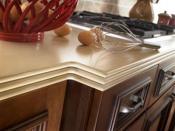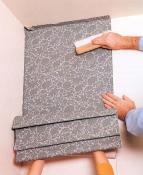Search
Login
Beautiful paths in the country with your own hands
This article offers tips on laying the garden path with your own hands: for it to last a long time, be beautiful or original, and the process itself was not complicated.
Table of contents
Path in the garden, for what?
Of course, the cottage itself is already a blessing: everything blossoms, smells, bears fruit - go, work, relax, enjoy the view, the taste, and the smell. However, there are rainy days when walking through the garden, you bring a considerable amount of dirt on your shoes, and you can slip in the most unexpected moment. In general - not aesthetically pleasing, unpleasant and dangerous. The way out of this situation is to make comfortable and beautiful. paths for giving.
In any weather, you can calmly admire nature or collect the products of your labor. In addition, the entire site takes on a finished, well-groomed appearance, and it is pleasant to the eye, and it is enviable to neighbors.
The construction of any track consists of two stages: preparation (foundation) and coating (roadbed). We will dwell on the coatings a little lower, and now we will talk in detail about the preparations for the construction of the path in the country.
Foundation preparation
A foundation made in good faith for the track is already half the success. First we need to dig an earthen trough.
This is done with a bayonet shovel, carefully removing the vegetation layer of the removed soil to a depth of about 10-15 cm over the entire planned track width. The width of the trough and future coverage should be approximately the same.
When the trough is dug up - its bottom needs to be compacted with rubble. To do this, pour crushed stone (medium-sized - 10-30 mm) to the bottom, about one and a half times the thickness of stones, and ram it into the ground by hand tamping.
The next layer is ballast. It is needed in order to ensure rainwater drainage through the path, and therefore to eliminate its possible washing out and erosion. The fraction of ballast stones is 10-40 mm, a sufficient height (thickness) is 5-7 cm. The very last, upper layer of the base is a sand cushion. This is a layer of compacted sand of the same height as the ballast.
This completes the preparation of the base for the track.
Coverage
paving slabs
Consider the most acceptable types of materials from which you can make paths in the country.
Both artificial and natural materials are used. Artificial - this is paving slabs of various colors, sizes and shapes and plastic tiles. The best material for the top coating for the arrangement of country paths is considered to be small paving slabs. An expensive, but the most beautiful version of country paths that will literally transform your site.
Tile for tracks is laid as follows:
align the upper sand layer of the base with a spatula or trowel horizontally, slightly slapping it with your palms;
on the compacted sand we lay the tile, at the same time tapping it with a rubber hammer, until it stops sitting and providing an equal distance between the tiles;
to control the level of the surface, a wooden block is used and its position determines which tile stands out from the desired level, to hook it to it, tap directly on the bar.
natural stone tile (plastushka)
A more complex look is the natural coating for the country path - natural stone tiles (plastrushka). Unprocessed stones are used in the form of flat uneven tiles (sedimentary rocks: schists, sandstones) 4-8 cm thick. Since the sizes of such tiles can vary greatly in length and width, they must be sorted and stored according to an approximate size before starting work. Too large tiles can be split.
It is quite difficult to pave the country path with such tiles, but the result is worth it: it will look beautiful and original. To lay tiles made of natural stone, you will additionally need a pickax for chipping and scraping stones to trim. An angle grinder (grinder) will also prove to be an indispensable assistant. The process itself:
if necessary, cutting, hanging or grinding the tile with a grinder, it is laid out on a site of 1 m or more in length, without nailing, so that the seams are the same if possible;
the width of the seam between the tiles is 10-25 mm. During laying on the eye, they figure out which tile is higher (thicker) and which is lower, and then they lift the tile, which is higher, remove excess sand from under it. Then, tapping the tile in the area of \u200b\u200b60-70 cm, go on;
it happens that the tiles are laid on a pavement - a dry mixture of cement and sand in a ratio of 1: 5. This mixture hardens after a few days, forming a more solid foundation. The seams between the tiles are sprinkled with garment or sand.
A garden path, laid out with your own hands, looks more accurately if you frame it with a curb or a curb. The curb is a concrete block 0.5 meters long. They are installed before laying the tiles, often using cement mortar for strength.
stone or concrete tile
Stone paths can also be decorated with an artificial curb, it will look very attractive: a combination of strict lines of concrete blocks with arbitrary forms of wild, uneven stone. Well, if you want to keep the whole track in the same natural style, then use the same plaque, selected in thickness and mounted on the edge, as a border.
Concrete stone paths are now popular. If you are a jack of all trades - this is what you need.
You make concrete stones yourself, using a special mold for making garden paths. A long and painstaking, but exciting and productive process.
Easy to install plastic tiles. It is laid directly on the ground, a special solution is not needed. The plastic path for the garden is durable and easy to maintain, however, it is suitable only for areas where there are no high subzero temperatures.
Making paths in the garden
In many tales, traveling along an unusual beautiful path, you can get into a magical land. You can arrange the magical road yourself by combining various colors and shapes. It is not necessary to make paths made of stone or tiles - you can connect creativity and make the paths unique.
For example, use wood (slices or logs) or mosaic (pebbles, gravel, glass). A wooden walkway in the garden perfectly accentuates the country style. Tracks do not have to be straight.
If your garden has some design elements, such as flower beds, lawns, flower beds, slides, etc. that have irregular curved or rounded shapes, then the paths may have the same sinuous shapes.
Freaky fixtures can serve as an original addition to your garden path.
Show your imagination and love when creating your garden path, and believe me: it will delight your eyes every time you step on it.





